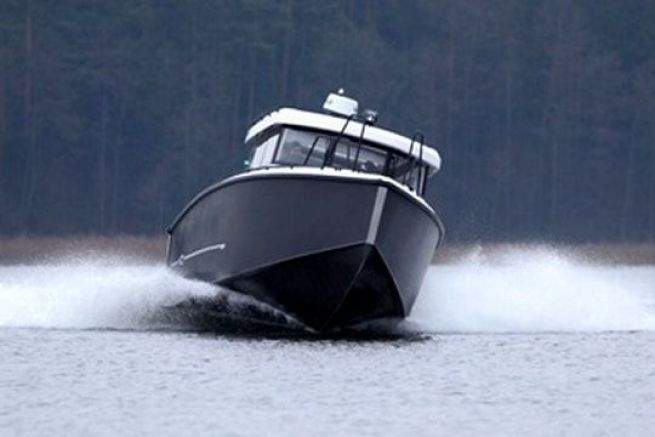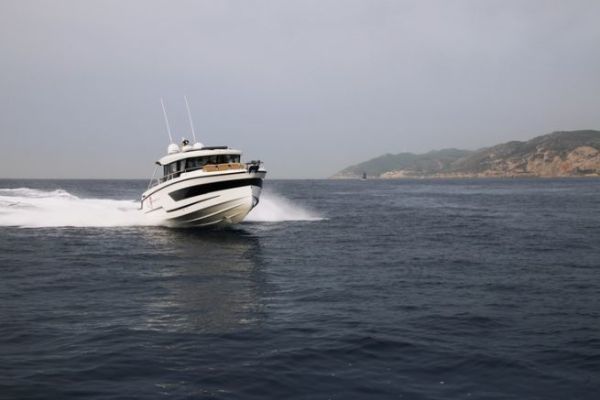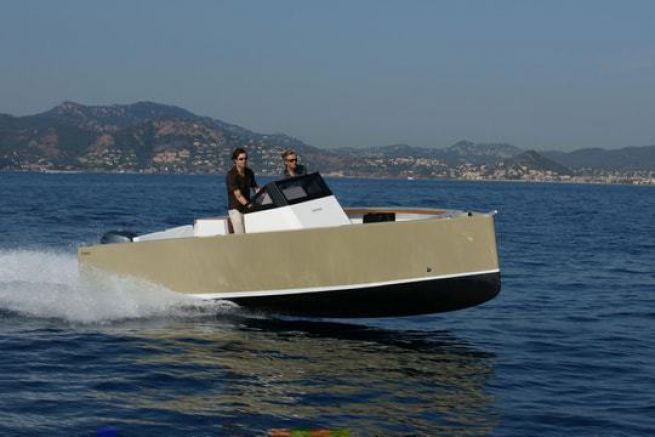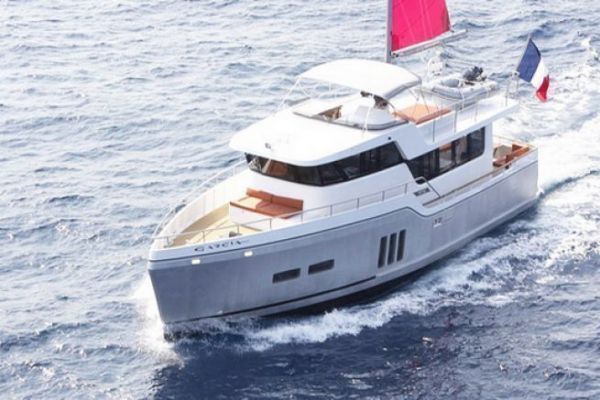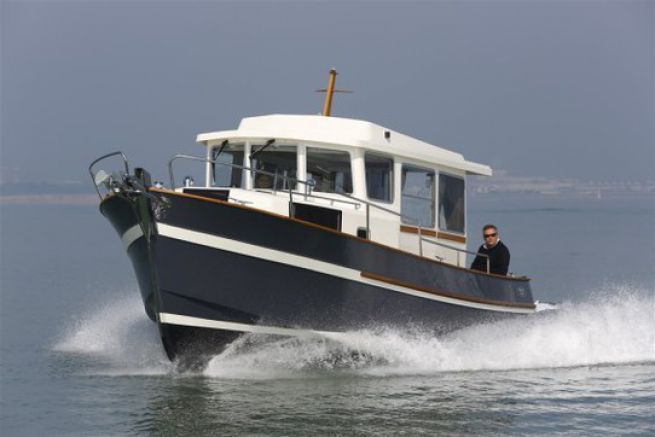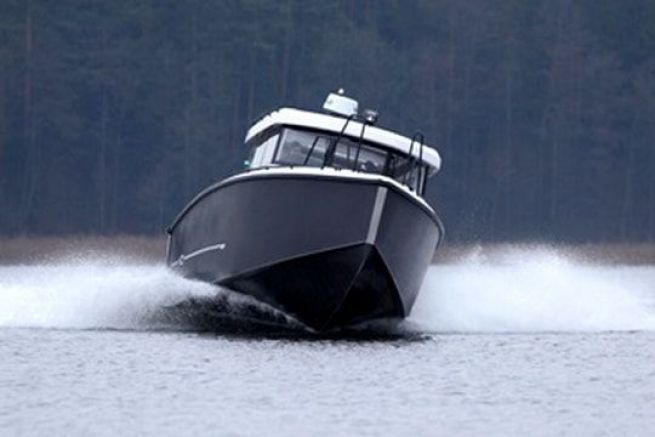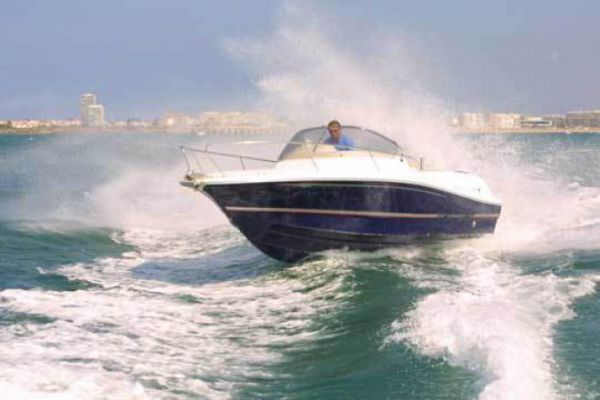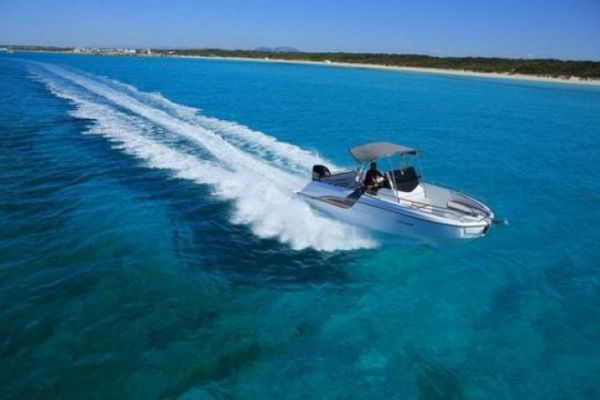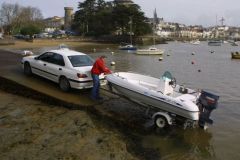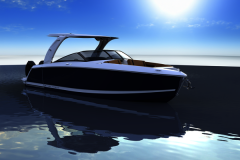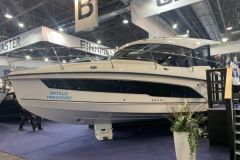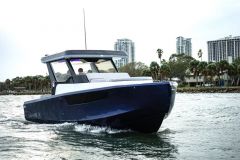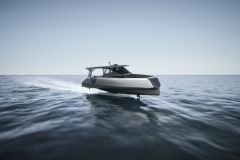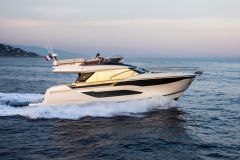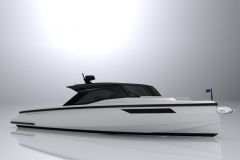Hulls that go out of control
A planing hull is a hull that goes off course. Heavily motorized, it rises above the water with speed, thanks to a lift effect on the hull bottom. Once lifted, planing hulls easily reach high speeds, as the smallest submerged surface limits the drag.
To go fast, you need to get away from hydrodynamic problems and sail above the water. This is why most pleasure boats use planing hulls. If the advantage is a gain in speed, the disadvantage lies in the comfort at sea. Indeed, to lift off, the hull must remain flat enough, especially in the rear sections, to give lift. On the other hand, it risks hitting the waves.
A variable hull V
Depending on the boat, the V-angle of the hull will be more or less marked. It will evolve along the hull, leading to flatter bottoms as you approach the transom.
Naval architect Pierre Delion explains: "All planing hulls are V-shaped, and by definition it has no defect . After that, it's the angle of the V that differs, and that brings a different behavior. Unlike the displacement hull, a planing hull is synonymous with speed"
Benefits:
- Speed
- Less fuel consumption at high speed than a semi-planing hull, because the drag is more limited
Disadvantages:
- Comfort at sea in chop and heavy swell
- Poor performance at low speeds
